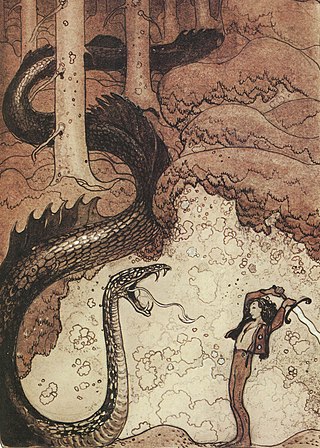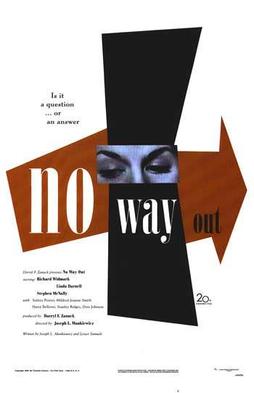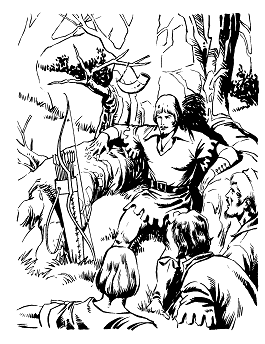
A dragon is a large magical legendary creature that appears in the folklore of many cultures worldwide. Beliefs about dragons vary considerably through regions, but dragons in western cultures since the High Middle Ages have often been depicted as winged, horned, and capable of breathing fire. Dragons in eastern cultures are usually depicted as wingless, four-legged, serpentine creatures with above-average intelligence. Commonalities between dragons' traits are often a hybridization of feline, reptilian, mammal, and avian features. Scholars believe vast extinct or migrating crocodiles bear the closest resemblance, especially when encountered in forested or swampy areas, and are most likely the template of modern Oriental dragon imagery.

The lindworm, also spelled lindwyrm or lindwurm, is a mythical creature in Northern and Central European folklore living deep in the forest that traditionally has the shape of a giant serpent monster. It can be seen as a sort of dragon.

Temple Bar was the principal ceremonial entrance to the City of London from the City of Westminster. In the middle ages, London expanded city jurisdiction beyond its walls to gates, called ‘bars’, which were erected across thoroughfares. To the west of the City of London, the bar was located adjacent to the area known as the Temple. Temple Bar was situated on the historic royal ceremonial route from the Tower of London to the Palace of Westminster, the two chief residences of the medieval English monarchs, and from the Palace of Westminster to St Paul's Cathedral. The road east of the bar within the City was Fleet Street, while the road to the west, in Westminster, was The Strand.

The Merlion is the official mascot of Singapore. It is depicted as a mythical creature with the head of a lion and the body of a fish. Being of prominent symbolic nature to Singapore and Singaporeans in general, it is widely used to represent both the city state and its people in sports teams, advertising, branding, tourism and as a national personification.

Duel Masters is a media franchise consisting of a manga, several anime series, a trading card game and several video games. The original manga, accompanied with his sequels, sold 4.5 million copies in Japan.

Catelyn Stark, later known as Lady Stoneheart, is a fictional character in the A Song of Ice and Fire series of fantasy novels by American author George R. R. Martin, and its television adaptation Game of Thrones. She is a prominent point of view character in the first three novels. She also appears in the fourth novel, A Feast for Crows (2005) and will return in a prominent role for the forthcoming sixth novel, The Winds of Winter.

No Way Out is a 1950 American film noir directed by Joseph L. Mankiewicz, and starring Richard Widmark, Linda Darnell, Sidney Poitier, and Stephen McNally, who portrays a doctor tending to slum residents whose ethics are tested when confronted with racism, personified by Widmark as hateful robber Ray Biddle.

The Antiquary (1816), the third of the Waverley novels by Walter Scott, centres on the character of an antiquary: an amateur historian, archaeologist and collector of items of dubious antiquity. He is the eponymous character and for all practical purposes the hero, though the characters of Lovel and Isabella Wardour provide the conventional love interest. The Antiquary was Scott's own favourite of his novels, and is one of his most critically well-regarded works; H. J. C. Grierson, for example, wrote that "Not many, apart from Shakespeare, could write scenes in which truth and poetry, realism and romance, are more wonderfully presented."

The Swann Memorial Fountain is an art deco fountain sculpture located in the center of Logan Circle in Philadelphia, Pennsylvania, United States.

A White Walker is a humanoid creature from the HBO television series Game of Thrones, and the George R. R. Martin novel series A Song of Ice and Fire on which it is based. Primarily referred to as the Others in the novels, White Walkers are a supernatural threat to mankind who dwell north of The Wall in Westeros. The Verge named them among "the most visually iconic creatures on the show". White Walkers are also featured in the show's merchandising.

The Resurrection Casket is a BBC Books original novel written by Justin Richards and based on the long-running British science fiction television series Doctor Who. It was published on 13 April 2006 alongside The Stone Rose and The Feast of the Drowned. It features the Tenth Doctor and Rose.

Peter Pan is a fictional character created by Scottish novelist and playwright J. M. Barrie. A free-spirited and mischievous young boy who can fly and never grows up, Peter Pan spends his never-ending childhood having adventures on the mythical island of Neverland as the leader of the Lost Boys, interacting with fairies, pirates, mermaids, Native Americans, and occasionally ordinary children from the world outside Neverland.

The Merry Men are the group of outlaws who follow Robin Hood in English literature and folklore. The group appears in the earliest ballads about Robin Hood and remains popular in modern adaptations.

Charles Sargeant Jagger was a British sculptor who, following active service in the First World War, sculpted many works on the theme of war. He is best known for his war memorials, especially the Royal Artillery Memorial at Hyde Park Corner and the Great Western Railway War Memorial in Paddington Railway Station. He also designed several other monuments around Britain and other parts of the world.
Charlie Fletcher is a British screenwriter and author. His works include the children's novel, Stoneheart.

Todmorden War Memorial is a war memorial located in Todmorden, West Yorkshire, England.

The Royal Fusiliers War Memorial is a memorial in London, dedicated to the members of the Royal Fusiliers killed in the World Wars, Russian Civil War and subsequent conflicts, along with members of a number of London Regiment battalions killed in the First World War. It consists of a bronze statue on a 16.5 feet (5.0 m) pedestal made of Portland stone.
"The Children" is the tenth and final episode of the fourth season of HBO's medieval fantasy television series Game of Thrones. The 40th episode of the series overall, "The Children" was written by series co-creators David Benioff and D. B. Weiss, and directed by Alex Graves. It first aired on HBO on June 15, 2014.
















